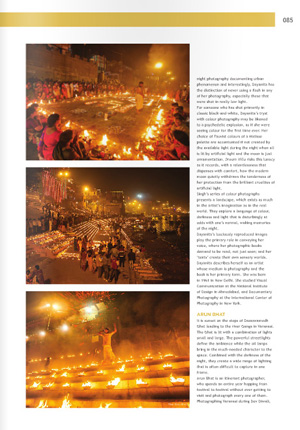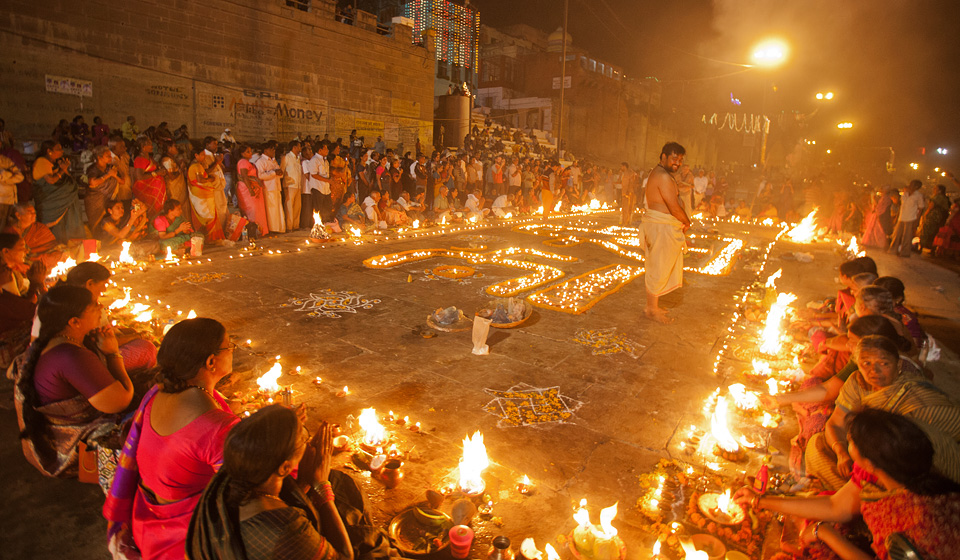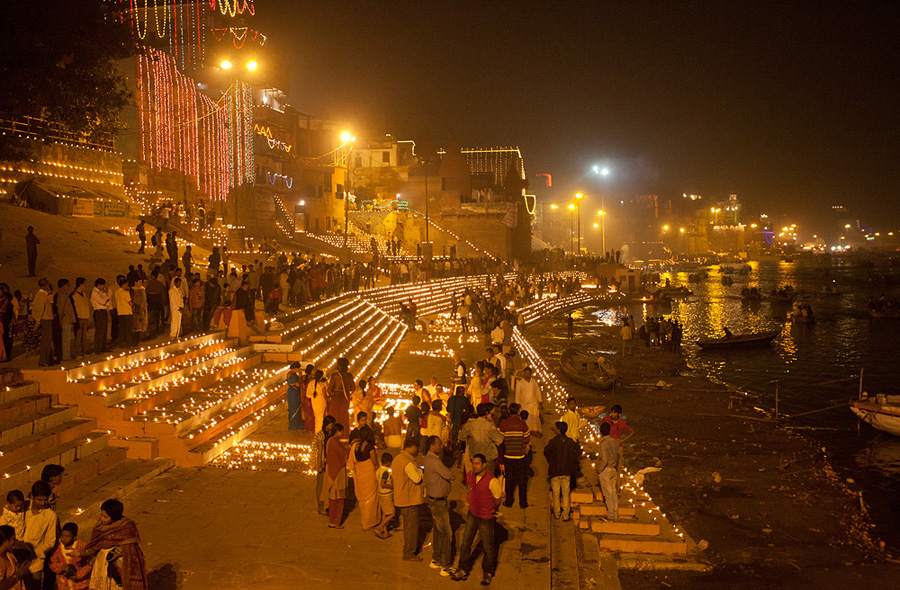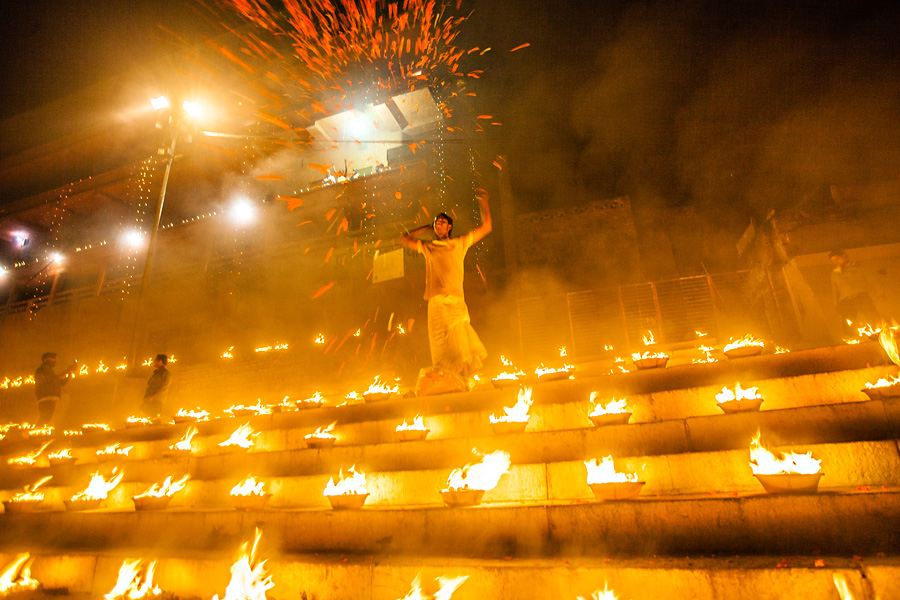Photographing Dev Diwali in Varanasi
 This month’s issue of Mondo Arc magazine features some of my work from Dev Diwali Festival in Varanasi. See the story here, or scroll down for the unedited question and answers. Most of these images are made during my annual photography tour to Varanasi, which we conduct in November.
This month’s issue of Mondo Arc magazine features some of my work from Dev Diwali Festival in Varanasi. See the story here, or scroll down for the unedited question and answers. Most of these images are made during my annual photography tour to Varanasi, which we conduct in November.
Q: Tell me about the experience of creating the images in Varanasi…how did you chose the subject.
Varanasi has an unseen depth to it, rarely understood by its visitors. During the day, it’s a busy mix of pious pilgrims hoping to earn merit in the other world, businesses that depend on them and tourists who are looking to witness all this. As the night falls, the dimly lit alleys grow quiet and everyone congregates at an explosion of lights at Dasaswamedh Ghat, where the evening ritual of Ganga Aarti is performed by priest swaying torches under floodlit steps leading to the river.
Behind all this is a belief that moves the city and an energy that holds its constructs together. My motive has always been to capture this belief and energy that serves as the city’s foundation. I attempt go behind the faces and their interactions, trying to catch an unseen flow of otherworldly forces that appear define the city’s way of life. The people, the lights and the rituals form manifestations of this internal energy through which I try to represent the ethereal mystery of the city.
Q: Since photography is essentially about understanding light and making images visible through the controlling and manipulation of light, how important was this body of work for you.
As the sun sets on the steps leading to the river, they are lit with a combination of lights small and large. The powerful streetlights define the ambiance while the oil lamps bring in the much needed character to the space. Combined with darkness of the night, they create a wide range of lighting that is often difficult to capture in one frame.
It takes another dimension during Dev Diwali, a festival celebrated in Varanasi by lighting thousands of oil lamps that is a treat to the eyes. But the thronging crowds, the dominating darkness and a thousand hotspots in the frame makes it extremely hard to balance the light and create a soothing effect in the photographs. It takes careful assessment of light-distribution to understand what compositions work, what needs to be included and what has to be kept out of the frame.
Working in these conditions can be an important lesson to any photographer on managing a very high dynamic light range, choosing appropriate boundaries that do not confuse the camera and make images that draw a viewer’s attention without compromising on portraying the mood of the place and grandeur of the festival. Photographing here has been an important part of my evolution in becoming confident at capturing the essence of a place in most diverse lighting conditions.
Q: How challenging was it shooting in low light and what are your views about using a flash?
It’s never easy to photograph in low-light. However, having been shooting with digital cameras in Varanasi for more than a decade now, I can say that the rapidly improving imaging technology has come to the aid of photographers in recent years. Cameras are becoming increasing better at handling low-light situations as well as high-contrast scenes. But it still remains hard to create images in a scene with randomly alternating sections of bright lighting and patches of darkness. The night-sky creates empty spaces that appear stark and unwieldy against the dramatic light below. Compositions are never easy, unless you are willing to slow-down, observe and take time to capture what is unfolding in front of you.
When used carefully, flash is often a great aid in balancing the distribution of light in a frame. But unless the photographer understands a flash well, knows how to manage its intensity and harshness, the results can often be bad. He or she can end up with images that have a poor colour balance or of inconsistent lighting. I prefer to carry a flash with me when I am travelling. Though it gets used sparingly, it helps me make the desired images in many challenging lighting situations.
Q: India is known for its festivals and pageantry, how does this effect your work as a photographer and what drew you to Varanasi?
Festivals have always been in the center-stage of a travel photographer’s work. The splash of colours, flashy lights and festive revelries are great subjects to the camera. Being in India helps, as the celebrations are so numerous and so diverse that you can spend an entire year hopping from festival to festival without ever getting to visit and photograph everyone of them. I often align my travel calendar to festivals. Visiting Varanasi during Dev Diwali is now an annual ritual I do not miss.
I first came to Varanasi purely out of curiosity, trying to understand what draws so many people to this ancient city. I have since returned half-a-dozen times and continue to be fascinated by the indelible faith that drives the city. I keep coming back to understand what fuels the unrestrained flow of life in the city that has survived millenniums in a way that few places anywhere in the world have.
Q: What does manufactured light mean to you? (Not talking about natural light)
Light available on call is perhaps one of the most significant inventions made by the mankind. It has changed the way of life forever, revolutionized the quality of life and has changed lifestyles. Today, man made light and its modifiers have helped define the sense of space and mood of the moment in everyday life as well as in special occasions. It has considerably enhanced our way of living and the way we do things. As a photographer, I see well-designed light dramatically alter the perception of human habitations and the way it can be permanently imprinted in an image.


